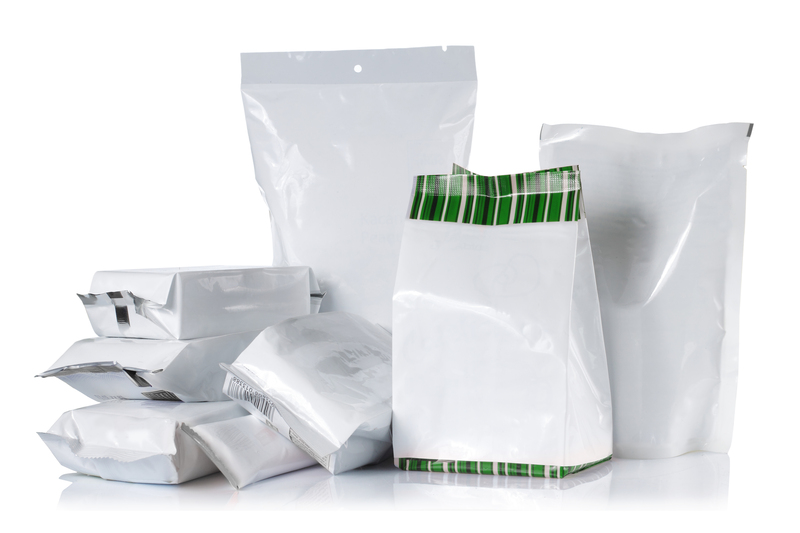Reducing Environmental Impact Through Smart PPE Waste Disposal
The global surge in the use of Personal Protective Equipment (PPE)--such as masks, gloves, and face shields--has played a crucial role in ensuring public safety, especially during health emergencies. However, this protective gear has inadvertently become a significant contributor to environmental pollution. Reducing environmental impact through smart PPE waste disposal is no longer just an option; it is a pressing necessity for safeguarding ecosystems and human health. In this comprehensive guide, we'll explore sustainable PPE waste management practices, innovative technologies, and actionable steps for organizations and individuals.
Understanding the Environmental Impact of PPE Waste
Widespread usage of PPE has resulted in an unprecedented spike in plastic waste. Most PPE, particularly single-use masks and gloves, are made from non-biodegradable plastics. When improperly discarded, these items can persist in the environment for centuries, contributing to soil and water pollution, harming wildlife, and even entering the food chain as microplastics.
- Non-biodegradable Materials: Most PPE products are composed of polypropylene or similar plastics that do not decompose naturally.
- Increasing Landfill Pressure: The volume of discarded PPE has overwhelmed waste management systems in many parts of the world.
- Marine Pollution: Improperly disposed PPE can be carried into waterways, posing risks to aquatic life.
- Toxic Emissions: Incinerating plastic PPE waste can release hazardous gases, further impacting air quality.

Why Smart PPE Waste Disposal Is Essential
Smart PPE waste disposal goes beyond merely collecting and discarding PPE. It involves adopting environmentally friendly practices, leveraging technology, and raising awareness to minimize the ecological footprint of PPE usage. Effective management is vital for:
- Protecting biodiversity and aquatic habitats
- Reducing greenhouse gas emissions
- Integrating circular economy principles
- Mitigating long-term human health risks
Challenges in PPE Waste Management
Despite growing awareness, significant barriers impede the implementation of sustainable PPE waste disposal strategies:
- Lack of Infrastructure: Many regions lack dedicated PPE disposal systems separate from general waste.
- Limited Knowledge: Proper PPE disposal protocols are often unclear to the general public.
- Sanitation Risks: PPE that has been used is often treated as hazardous waste, complicating recycling and reuse.
- Financial Constraints: Establishing advanced waste treatment and recycling facilities requires investment.
Sustainable Strategies for Smart PPE Waste Disposal
1. Segregation at Source
Segregating PPE waste from general and recyclable waste streams is a fundamental step for reducing environmental impact through PPE waste disposal. Designated PPE disposal bins, clearly marked and widely accessible, facilitate efficient collection and prevent contamination of other waste streams.
- Color-coded Bins: Use specific colors (e.g., red for hazardous PPE) to reduce confusion and enhance compliance.
- Signage and Instructions: Display clear guidance on properly disposing of different PPE items.
2. Adoption of Biodegradable and Reusable PPE
Shifting from single-use plastic PPE to biodegradable or reusable alternatives can dramatically lessen environmental impact. Companies are increasingly developing PPE made from plant-based materials or textiles that can be safely composted or laundered and reused multiple times.
- Biodegradable Masks and Gloves: Opt for PPE made from natural fibers such as cotton or bamboo.
- Reusable Face Shields: Disinfect and reuse rigid PPE items where possible, reducing waste volumes.
3. Innovative PPE Recycling Technologies
Traditional recycling methods often cannot process contaminated or mixed-material PPE. Recently, advancements in chemical and mechanical recycling now allow for the breakdown and repurposing of certain PPE waste.
- Pyrolysis: Converts plastic-based PPE into fuel or raw materials for new products.
- Mechanical Recycling: Shreds and melts down pure plastic PPE for reuse in manufacturing.
- Chemical Depolymerization: Breaks down polymers into monomers for the creation of new plastics.
4. Energy Recovery from PPE Waste
Energy-from-waste (EfW) processes can recover useful energy by incinerating non-recyclable PPE waste under controlled conditions, minimizing emissions and producing heat or electricity. While not as beneficial as recycling or reusing, EfW is preferable to landfill disposal.
5. Community Education and Awareness Campaigns
Changing public behavior is as important as technical solutions. Reducing environmental impact through smart PPE waste management requires widespread understanding of proper disposal methods.
- Online and Offline Campaigns: Leverage social media, local outreach, and educational materials.
- Corporate Trainings: Empower organizations to educate employees about sustainable PPE handling.
- Incentive Programs: Reward correct disposal practices in workplaces and communities.
6. Collaboration Between Stakeholders
Partnerships between governments, healthcare providers, industry, and NGOs are crucial for successful implementation of sustainable PPE waste disposal systems.
- Legislative Action: Enforce regulations mandating proper disposal and recycling of PPE.
- Research and Development: Fund innovation in biodegradable PPE and new recycling methods.
- Supply Chain Integration: Encourage manufacturers to design PPE with end-of-life disposal in mind.
Step-By-Step Guidelines for Smart PPE Waste Disposal
- Assess Your Setting: Identify the types and volume of PPE waste generated in your facility or community.
- Implement Segregation: Set up distinct collection points with appropriate bins and signage.
- Choose Eco-Friendly PPE: Source and distribute reusable or compostable PPE where feasible.
- Use Certified Disposal Services: Hire waste management partners specializing in hazardous and medical waste.
- Train Personnel and Public: Conduct regular training and awareness sessions.
- Monitor and Audit: Track waste volumes and disposal routes to continually improve processes.
Case Studies: Smart PPE Waste Disposal in Action
Hospital Systems:
Many hospitals have adopted closed-loop PPE collection systems. Used PPE is routed to specialized recycling plants, dramatically reducing landfill burden. Some facilities disinfect and melt down polypropylene masks to manufacture trays or other non-medical items, showcasing circular economy principles.
Corporate Offices:
Forward-thinking companies provide staff with reusable fabric masks and promote a "return and refresh" program for PPE. Used masks are collected, laundered, and redistributed safely. This not only cuts costs but also slashes the amount of PPE waste generated.
Public Transit:
Transit authorities install PPE-specific disposal stations at key locations, combined with bold signage and regular public service announcements. This holistic approach has led to cleaner stations and a measurable reduction in littered PPE.
The Role of Policy and Regulation
Governments play a pivotal role in guiding the smart disposal of PPE waste. Examples of effective policy action include:
- Mandatory Segregation: Enacting laws that require separate collection and treatment of PPE waste.
- Incentives for Green Innovation: Subsidizing businesses that develop sustainable PPE products or recycling techniques.
- Public Reporting: Requiring periodic reporting by organizations on PPE purchasing, usage, and disposal to promote transparency.
By creating conducive frameworks, governments enable a national approach to environmental impact reduction through PPE waste management.
New Technologies Revolutionizing PPE Waste Reduction
The integration of cutting-edge technologies has the potential to transform PPE waste management:
- Artificial Intelligence: Smart bin systems use AI-powered sensors to detect and sort PPE waste automatically, increasing sorting accuracy and recycling rates.
- Blockchain for Traceability: Blockchain technology allows for transparent tracking of PPE waste from source to final treatment, improving accountability.
- Mobile Apps: User-friendly applications guide individuals and organizations on proper disposal points nearby, collection schedules, and recycling opportunities.
Practical Tips for Individuals: Doing Your Part
Everyone has a role to play in reducing environmental impact with smart PPE disposal. Simple, everyday actions include:
- Choose reusable masks and gloves wherever possible, provided they can be safely sanitized.
- Use designated bins for PPE waste--never discard items in recycling or organic bins.
- Cut the elastic bands on masks before disposal to protect wildlife.
- Stay informed about local PPE disposal programs and participate actively.

The Future of Sustainable PPE Waste Management
The challenges of PPE waste are substantial, but innovation and global cooperation offer pathways to a cleaner, safer world. The future will likely be shaped by:
- Growth of Green PPE: Advances in material science will promote the mass adoption of compostable and bio-based PPE.
- Expansion of Producer Responsibility: Manufacturers may soon be required to fund or implement end-of-life takeback systems.
- Consumer-driven Change: Growing public demand for eco-friendly PPE and responsible waste management will drive market trends.
Conclusion: Building a Greener Tomorrow Through Smart PPE Waste Disposal
Reducing environmental impact through smart PPE waste disposal is an achievable goal that demands coordinated action. By embracing sustainable materials, enhancing waste segregation, investing in recycling technologies, and fostering informed public participation, we can break the link between safety and pollution. Whether you are an individual, a business owner, or a policymaker, the choices you make today will shape the world's ecological resilience for generations to come.
Together, we can protect both our health and the planet--one smart PPE disposal at a time.